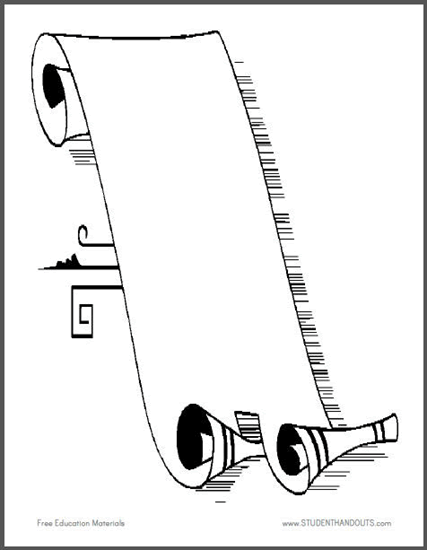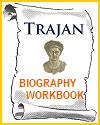| Ancient Scroll Stationery Template or Sign |
|---|
| www.studenthandouts.com ↣ Forms for Education ↣ Stationery |
 |  |
|
Make a statement on the classroom bulletin board or in your correspondence with this fun printable. Click here to print. Scrolls can be more convenient for publishing texts than hardbound books in several ways, especially considering historical and practical contexts. Firstly, scrolls are typically lighter and more flexible than hardbound books, making them easier to transport and handle. This portability was particularly advantageous in ancient times, when scholars, scribes, and messengers needed to carry texts over long distances. Scrolls also allow for continuous reading without the interruption of turning pages. This format is beneficial for lengthy documents, as it enables a seamless flow of information. Readers can unfurl the scroll to their desired section, which can be quicker and more efficient than flipping through pages in a book. Additionally, scrolls are easier to produce in settings with limited binding materials or technology. Creating a scroll requires less sophisticated tools and processes than binding a hardbound book, making it a more accessible option for disseminating information in certain contexts. Scrolls also offer unique advantages in terms of preservation. When stored properly, scrolls can be less prone to damage from spine breakage or binding deterioration, common issues with hardbound books. Their ability to be rolled up protects the inner content from exposure to light and dust, potentially extending the lifespan of the text. While modern technology has largely replaced scrolls with more advanced formats, their historical significance and practical benefits highlight their convenience in specific contexts. |
| www.studenthandouts.com ↣ Forms for Education ↣ Stationery |











